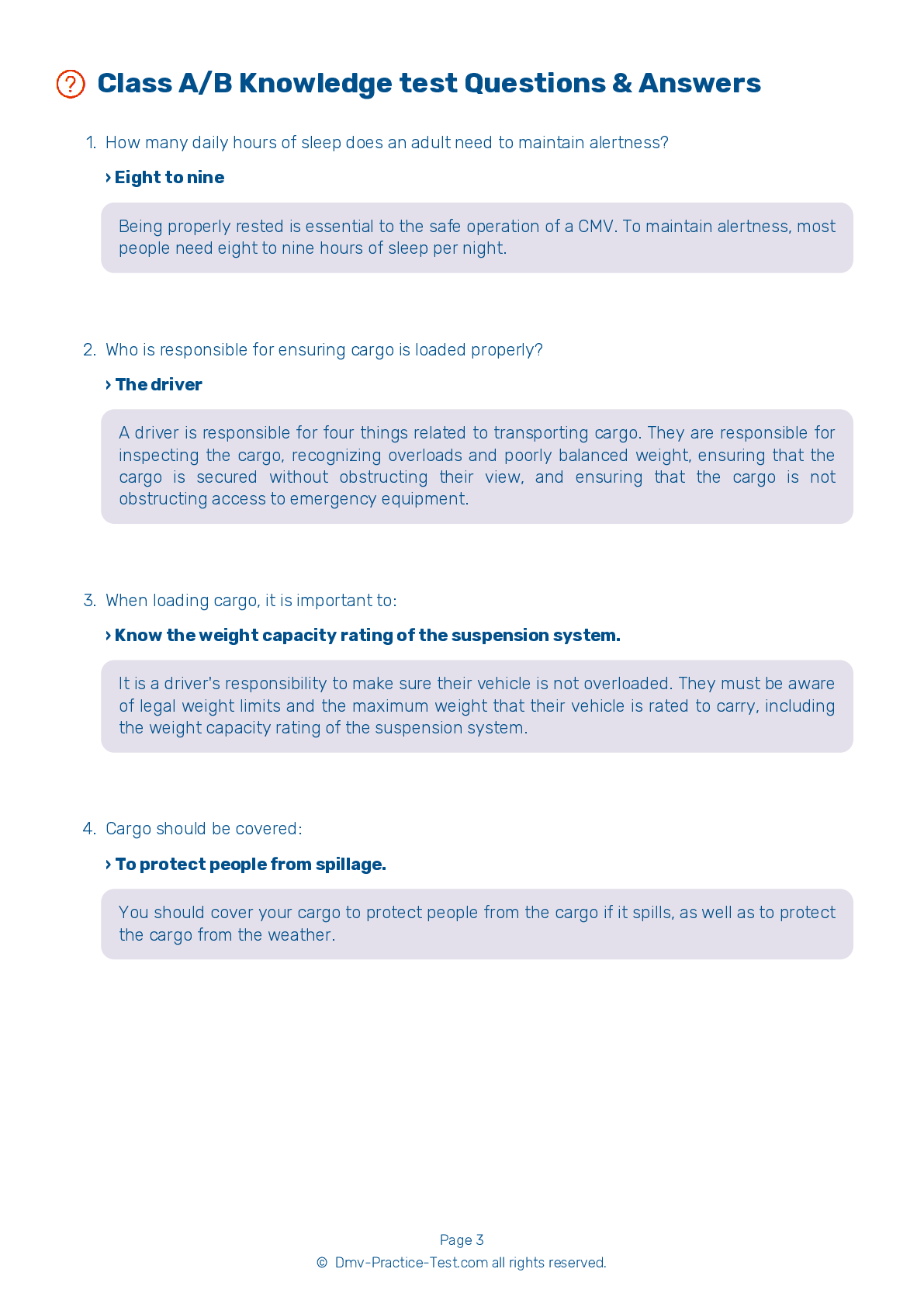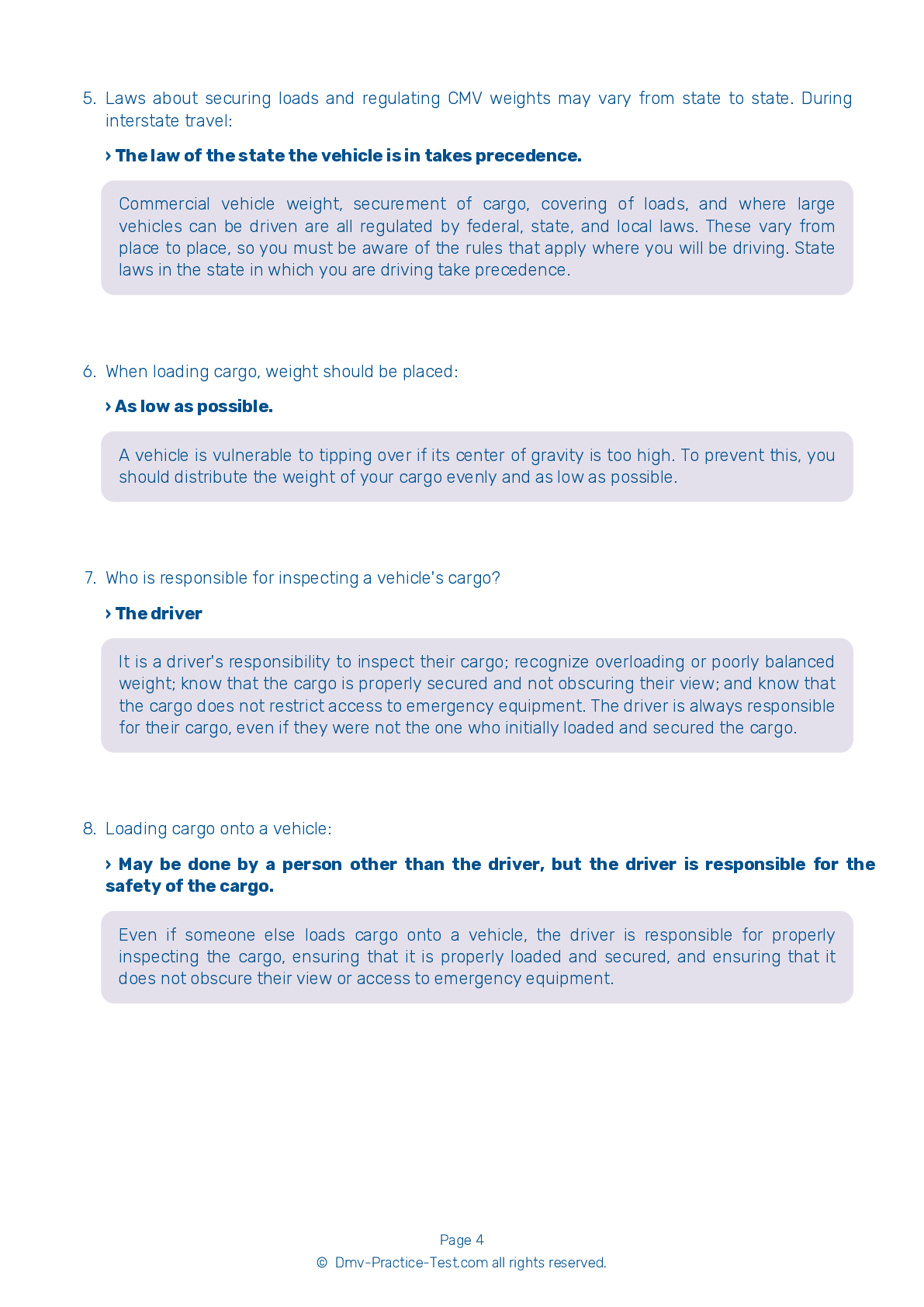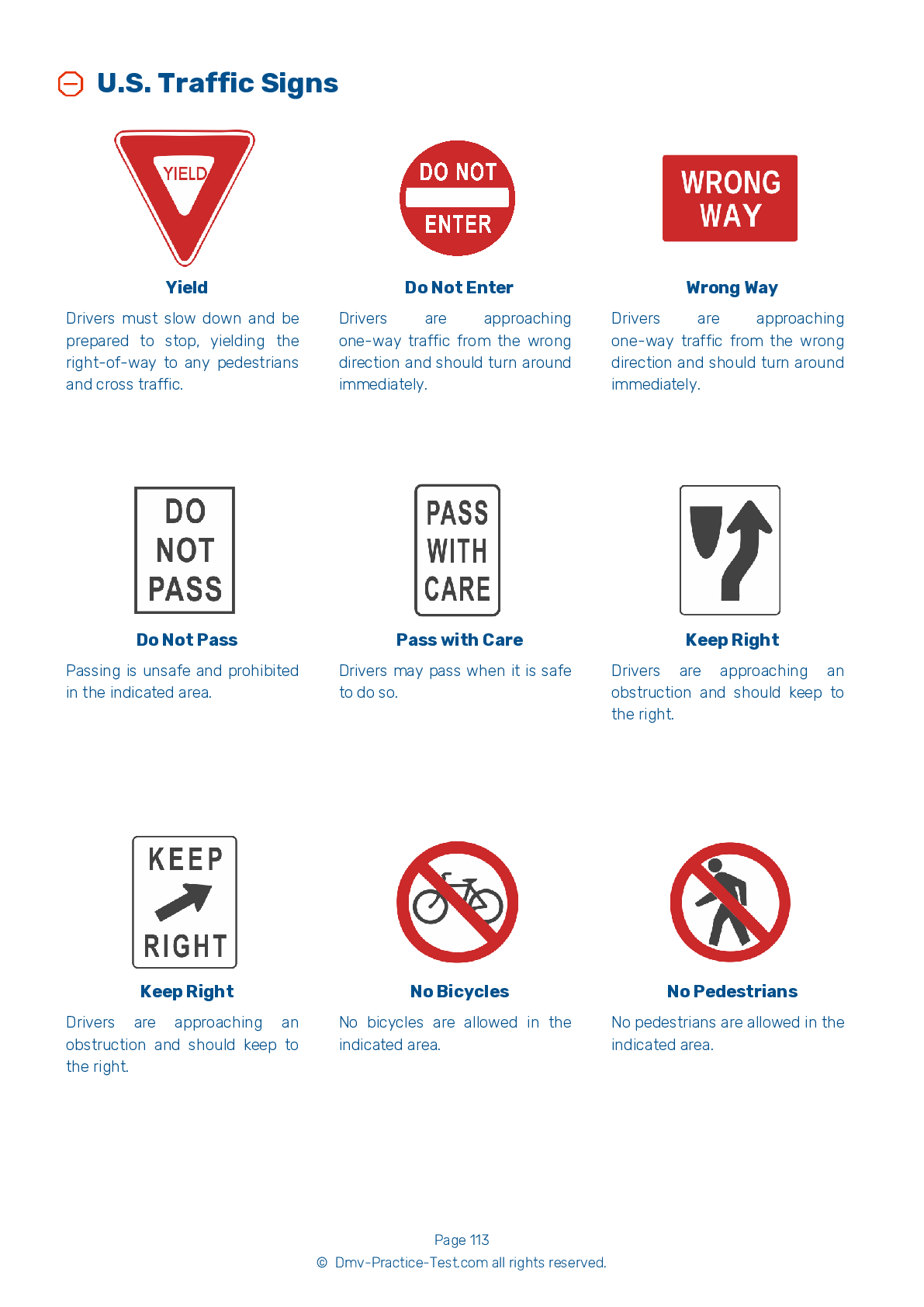Class A Driving Test | South Dakota 2025 #2 Page 2 of 7
Train for FREE online with our South Dakota class A license test. The official exam test consists of several obligatory parts, with all of them checking your knowledge of different blocks of road rules. If you need to obtain a SD CDL class A permit in 2025, practice as much as possible. Free sample tests published on our website will help you check and improve your knowledge and boost your grades. Please bear in mind that CDL class A requirements may vary from state to state.
8 . When inspecting engine compartment belts during the vehicle inspection test:
When checking the engine compartment during the vehicle inspection test, you must check the power steering, water pump, alternator, and air compressor belts. In addition to cracks and frays, you should check the belts for snugness, allowing up to three-quarters of an inch of play at the center of each belt. If any of these items are not belt-driven, you must identify them and ensure that their components are operating properly, are not damaged or leaking, and are mounted securely.
9 . Emergency equipment, such as fire extinguishers, are:
All commercial motor vehicles must carry appropriate emergency equipment, including fire extinguishers.
10 . Placards should be used:
Warning placards are required to be used any time a vehicle is carrying designated types and amounts of hazardous materials. A placarded vehicle must display placards on all four of its sides.
11 . Cargo on flatbed trailers should be:
On flatbed trailers or trailers without sides, cargo must be tied down to keep it from shifting or falling in transit.
12 . When starting an engine, warning lights and buzzers should:
After starting a vehicle's engine, the warning lights and buzzers for oil, coolant, charging circuits, and the Anti-Lock Braking System (ABS) should go out right away.
13 . A cargo of hanging meat:
An operator should drive with care when transporting a cargo of hanging meat. Such a load is unstable, both because it has a high center of gravity and because the swinging of the meat can affect the driver's handling of the vehicle.
14 . If a vehicle has a vehicle inspection report, the driver:
For the first step of a vehicle inspection, you should review the last inspection report on your vehicle, if there is one. The carrier should have repaired any problems noted on the report.
See the exact questions that will be on the 2025 South Dakota DMV exam.
99.2% of people who use the cheat sheet pass the FIRST TIME
Lillian MCcranie explains how our CDL study guide was helpful in passing the exam and recommends it to everyone.
Cameron tells us how he purchased the CDL exam, and found it to be a useful tool which helped him pass the exam and find a job.



